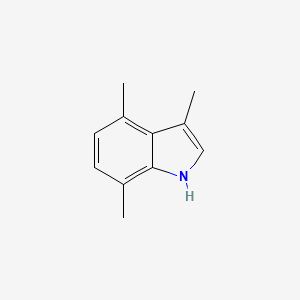|
Name: Clotiazepam
Type: Benzodiazepine
AKA: Trecalmo, Rize, Clozan, Veratran

|
|
II. Natural Derivative
Synthetic substance, no natural derivative
 |
|
III. Chemical Profile (IUPAC name)

|
|
IV. History
Clotiazepam, a benzodiazepine, was developed in the 1960s. It is used for its anxiolytic and sedative effects. Its development marked an advancement in the treatment of anxiety disorders and contributed to the broader benzodiazepine class.

|
|
V. Legal Information
Clotiazepam is a benzodiazepine used for anxiety and related disorders. It is classified as a Schedule IV controlled substance in the U.S. due to its potential for dependence. Internationally, it is regulated similarly to other benzodiazepines, reflecting concerns about misuse and addiction. [Source: UNODC].
US Federal Schedule - IV
Schedule IV drugs, substances, or chemicals are defined as drugs with a low potential for abuse and low risk of dependence. Some examples of Schedule IV drugs are: Xanax, Soma, Darvon, Darvocet, Valium, Ativan, Talwin, Ambien, Tramadol.
Key US Federal Policies:
Controlled Substances Act. Public Law: Public Law 91-513 (text can be found on GovInfo) (https://www.dea.gov/drug-information/csa). Date enacted: October 27, 1970.
|
|
VI. Physical Effects
Clotiazepam is a benzodiazepine used for anxiety and insomnia. It acts as a downer, causing sedation, muscle relaxation, and reduced heart rate. Short-term use is effective for managing anxiety and sleep disorders, but long-term use can lead to dependence, cognitive impairment, and health issues. Overdose risks include severe sedation and respiratory depression. Safe use involves following prescribed dosages and regular medical supervision. Recent research highlights its effectiveness and safety profile.  |
|
VII. Psychological Effects
Clotiazepam, a benzodiazepine, affects GABA receptors, causing sedation and mood alteration. Immediate effects include anxiety reduction and mood enhancement, lasting several hours. Long-term use can lead to dependence and psychological issues such as depression. Research indicates significant mental health risks with chronic use, including severe mood disturbances and potential for addiction.
 |
|
VIII. Culture
Clotiazepam, a benzodiazepine, is used to treat anxiety and related disorders. Its development in the mid-20th century reflects the growing interest in pharmaceuticals for mental health treatment. Culturally, benzodiazepines like clotiazepam have been both celebrated for their effectiveness and criticized for their potential for dependency and abuse. Media often covers stories of personal struggles with benzodiazepine dependence, contributing to ongoing debates about mental health care and the ethical use of such medications. Clotiazepam is used medicinally rather than recreationally and is associated with the broader narrative of psychiatric treatment and the challenges of managing anxiety disorders.
 |
